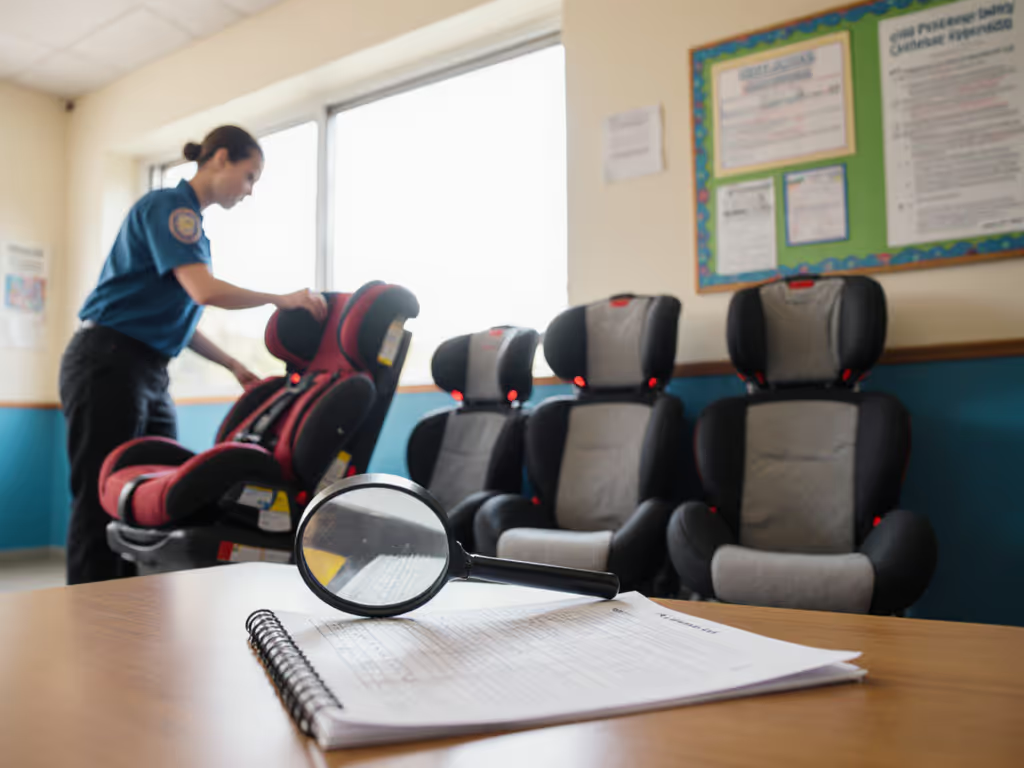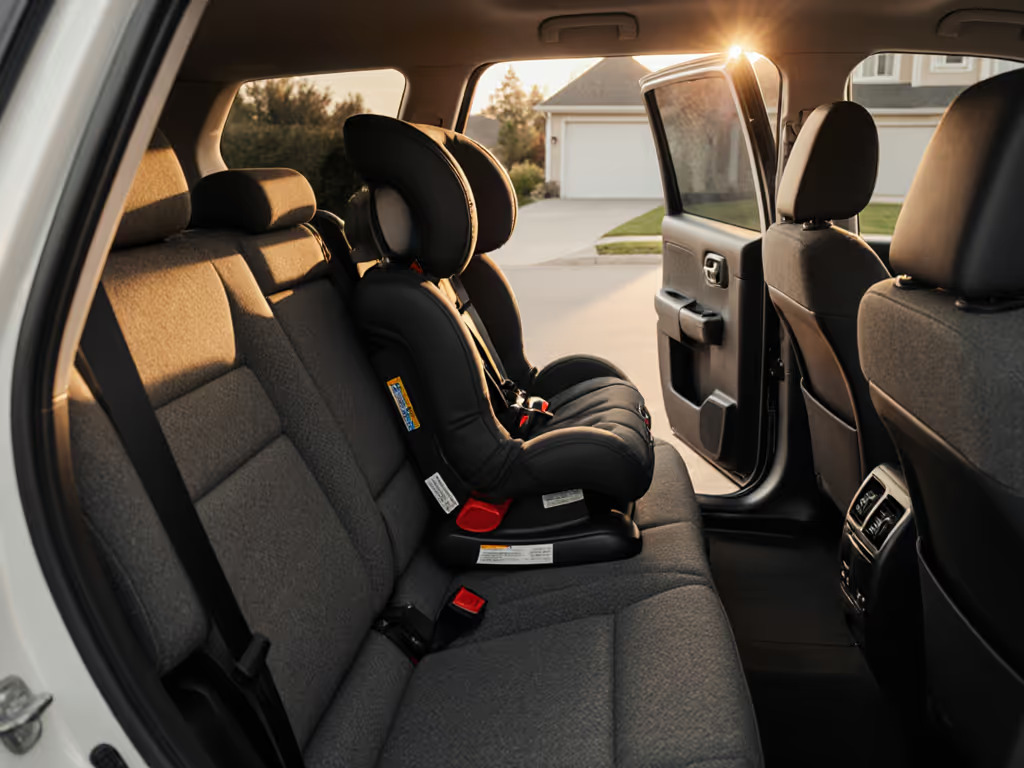
Why Booster Seats Matter: Complete Safety Guide

Nearly half of all serious injuries in child car crashes can be prevented with a properly used booster seat. As children outgrow their car seats, many parents wonder when and how to make the switch to adult seat belts. Getting this step right is crucial because a poor fit can put young passengers at real risk. Understanding what defines a booster seat, the key types, and the best safety practices can make travel much safer for growing kids.
Key Takeaways
| Point | Details |
|---|---|
| Importance of Booster Seats | Booster seats are essential for children transitioning from car seats to adult seat belts, reducing the risk of serious injury by 45%. |
| Types of Booster Seats | There are two main types: high-back boosters provide head support, while backless boosters are portable and best for vehicles with headrests. |
| Global Regulations | Booster seat laws vary globally but generally include age, weight, and height requirements for safety during travel. |
| Avoid Premature Transition | Children should remain in booster seats until they meet height and weight milestones, typically around 4 feet 9 inches and ages 8-12, to ensure proper seat belt fit. |
Booster Seats Defined And Core Principles
A booster seat represents a critical safety transition for children who have outgrown traditional car seats but are not yet ready to use adult seat belts. These specialized seats are designed to elevate children, allowing vehicle seat belts to fit correctly across their smaller body frames. By positioning children at the right height, booster seats dramatically improve safety during travel.
The core function of booster seats is protection through proper positioning. According to the Centers for Disease Control (CDC), these seats reduce serious injury risk by 45% compared to seat belt use alone. They accomplish this by lifting children so that the lap and shoulder belts align with the strongest parts of their body - the hips and chest. Without a booster seat, seat belts can actually cause more harm than protection, potentially sliding up and causing significant injury during a collision.
Key features of effective booster seats include:
- Height adjustment capabilities
- Compatibility with different vehicle seat designs
- Side impact protection
- Lightweight and portable construction
- Easy installation mechanisms
Parents should understand that booster seats are not optional extras but essential safety devices. SafeKids recommends using booster seats until a child can properly fit in a standard seat belt, which typically occurs around 4 feet 9 inches in height and between 8-12 years old. Every inch of proper positioning matters when it comes to protecting your child during unexpected road incidents.
Key Booster Seat Types And Differences
Navigating the world of booster seats can feel like deciphering a complex puzzle. Essentially, there are two primary categories that parents need to understand: high-back boosters and backless boosters. Each type serves a unique purpose and offers distinct advantages depending on your vehicle and child's specific needs.
According to Hopkins Medicine, high-back boosters are particularly beneficial for vehicles without robust headrests or with low seat backs. These seats provide critical head and neck support, creating an additional safety layer for younger children transitioning from traditional car seats. They typically feature side-impact protection and can help position the seat belt more accurately across a child's body. In contrast, backless boosters are lightweight, incredibly portable, and work best in vehicles with existing headrests that provide adequate support for the child's head and neck.
Here's a comparison of the main booster seat types and their features:
| Feature | High-Back Booster | Backless Booster |
|---|---|---|
| Head/Neck Support | Provides extra support | Relies on vehicle headrest |
| Side Impact Protection | Included in most models | Generally not available |
| Portability | Bulkier, less portable | Lightweight, very portable |
| Best For | Vehicles without headrests | Vehicles with proper headrests |
| Typical Use Age | 4-12 years | 4-12 years |
The National Highway Traffic Safety Administration (NHTSA) further categorizes booster seats into two functional types:
- Belt-Positioning Boosters: Designed to raise children so vehicle seat belts fit correctly
- Combination Child Restraints: Versatile seats that transition from forward-facing harness seats to booster seats
Choosing the right booster seat isn't just about type - it's about matching the seat to your child's size, weight, and your specific vehicle's design. Parents should always check manufacturer guidelines, vehicle compatibility, and ensure the seat provides optimal belt positioning across the child's strongest body points.
 Remember, a well-chosen booster seat can significantly reduce injury risks during unexpected road incidents.
Remember, a well-chosen booster seat can significantly reduce injury risks during unexpected road incidents.
How Booster Seats Enhance Child Safety
Child safety during vehicle travel is a complex challenge that booster seats address with remarkable precision. These specialized seats are not just accessories but critical protective mechanisms designed to bridge the dangerous gap between traditional car seats and standard seat belts. By strategically elevating children, booster seats transform how crash forces are distributed across a child's developing body.
Research from PubMed reveals a compelling statistic: children using belt-positioning booster seats experience a 45% reduction in serious injury risk compared to seat belt use alone. This dramatic safety improvement occurs because booster seats reposition children to interact with seat belt systems more effectively. Instead of seat belts cutting across vulnerable areas like the abdomen or neck, boosters ensure the belt crosses the strongest parts of a child's body - the hip bones and chest, minimizing potential trauma during unexpected collisions.
Key safety enhancements provided by booster seats include:
- Precise belt positioning across body's strongest points
- Reduced risk of internal organ damage
- Minimized potential for submarining (sliding under seat belt)
- Improved overall crash force distribution
- Enhanced protection for smaller body frames
Safe Kids research underscores a critical point: booster seats are essential for children who have outgrown traditional car seats but are not yet large enough for adult seat belts. These seats act as a crucial intermediary safety device, protecting children during a vulnerable developmental stage. By understanding and consistently using booster seats, parents can significantly reduce the likelihood of severe injuries in potential road incidents.
Global Laws And Safety Standards For Booster Seats
Child passenger safety is a global concern that transcends national boundaries, with countries worldwide implementing increasingly stringent regulations to protect young travelers. The landscape of booster seat laws reflects a complex interplay of scientific research, technological advancement, and regional safety priorities. While specific requirements vary, the underlying principle remains consistent: protecting children during vehicle travel through standardized safety measures.
The international Isofix standard represents a breakthrough in child safety seat technology, creating a universal attachment system that ensures secure installation across different vehicle models. This standardization addresses one of the most critical safety challenges - proper seat mounting. Unlike traditional seat belt attachments, Isofix provides a rigid, direct connection between the child safety seat and the vehicle, dramatically reducing the potential for incorrect installation that could compromise a child's protection during a collision.
Key global booster seat law considerations include:
- Age-based restraint requirements
- Weight and height specific regulations
- Mandatory use in passenger vehicles
- Specific installation technique standards
- Penalties for non-compliance
Most developed nations have evolved their child passenger safety laws to reflect comprehensive research. These regulations typically mandate booster seat usage based on precise metrics - not just age, but specific physical characteristics that determine a child's readiness to transition from specialized restraints to standard seat belts. Parents traveling internationally should understand that while core safety principles are universal, the specific implementation of child passenger safety laws can vary significantly between jurisdictions.
Common Mistakes And Risks Of Premature Transition
The journey from car seat to seat belt might seem straightforward, but premature transition is a dangerous pitfall many parents unknowingly encounter. Children's bodies are not miniature adult versions - they require specific protection that standard seat belts simply cannot provide. Moving a child out of a booster seat too early can expose them to significant risks during vehicle travel, potentially turning a minor accident into a life-altering event.
Research from PubMed highlights the critical nature of this transition, revealing that improper seat belt fit dramatically increases injury potential. Seat belts designed for adult body structures can cause severe damage to a child's more vulnerable physiology. When a seat belt sits incorrectly across a child's body, it can lead to serious injuries during a crash, including abdominal trauma, spinal cord damage, and increased risk of internal organ injuries.
Common mistakes parents make during booster seat transitions include:
- Relying solely on the child's age instead of height and weight
- Assuming children are ready when they feel "grown up"
- Removing booster seats too early due to child's discomfort
- Not checking proper seat belt positioning
- Ignoring manufacturer and safety guidelines
Safe Kids organization emphasizes that booster seat use should continue until a child reaches specific physical milestones - typically around 4 feet 9 inches tall and between 8-12 years old. This recommendation isn't arbitrary but based on extensive biomechanical research demonstrating how a child's body structure interacts with standard safety restraints. Parents must remain vigilant and patient, understanding that each additional year in a properly used booster seat significantly reduces the potential for catastrophic injury.

Ensure Your Child’s Safety with the Right Booster Seat Choices
The article highlights a critical challenge many parents face: knowing exactly when and how to transition children safely from car seats to booster seats while ensuring proper belt positioning and protection against serious injuries. Key concerns include avoiding premature transitions, fitting booster seats correctly to the child’s size, and selecting the right type for your vehicle setup. These are common worries that come with protecting smaller body frames during this delicate growth phase.
Fits for Years Seats understands the anxiety that comes from choosing a booster seat that truly fits your child and vehicle without compromise. Our expert guides and product reviews are designed to help you navigate this important safety step with ease. Explore detailed information on booster seat types, installation tips, and safety standards all backed by current research. You can trust us to support you in safeguarding your child through every stage, reducing risks linked with improper seat usage.
Ready to make confident booster seat decisions that align perfectly with your child’s needs? Visit Fits for Years Seats now to access comprehensive, research-driven advice and find the best booster seat options. Don’t wait until a safety incident occurs. Start today by exploring our complete safety guide and ensure your child enjoys the highest protection on every trip.
Frequently Asked Questions
What is a booster seat, and why is it important?
A booster seat elevates children who have outgrown traditional car seats but are not yet large enough for adult seat belts. It ensures proper seat belt positioning, which significantly reduces the risk of serious injuries in the event of a crash.
What are the different types of booster seats, and how do they differ?
There are two main types of booster seats: high-back boosters and backless boosters. High-back boosters provide head and neck support and are ideal for vehicles without proper headrests, while backless boosters are portable and best used in vehicles that already have adequate head support.
How do booster seats enhance child safety during travel?
Booster seats improve child safety by positioning seat belts correctly across the strongest parts of a child's body, reducing the risk of internal injuries and ensuring better crash force distribution during accidents.
When should a child transition from a booster seat to a regular seat belt?
Children should use booster seats until they reach about 4 feet 9 inches in height, which usually occurs between ages 8-12. It's crucial to base the transition on physical measurements rather than age alone to ensure proper seat belt fit and safety.




